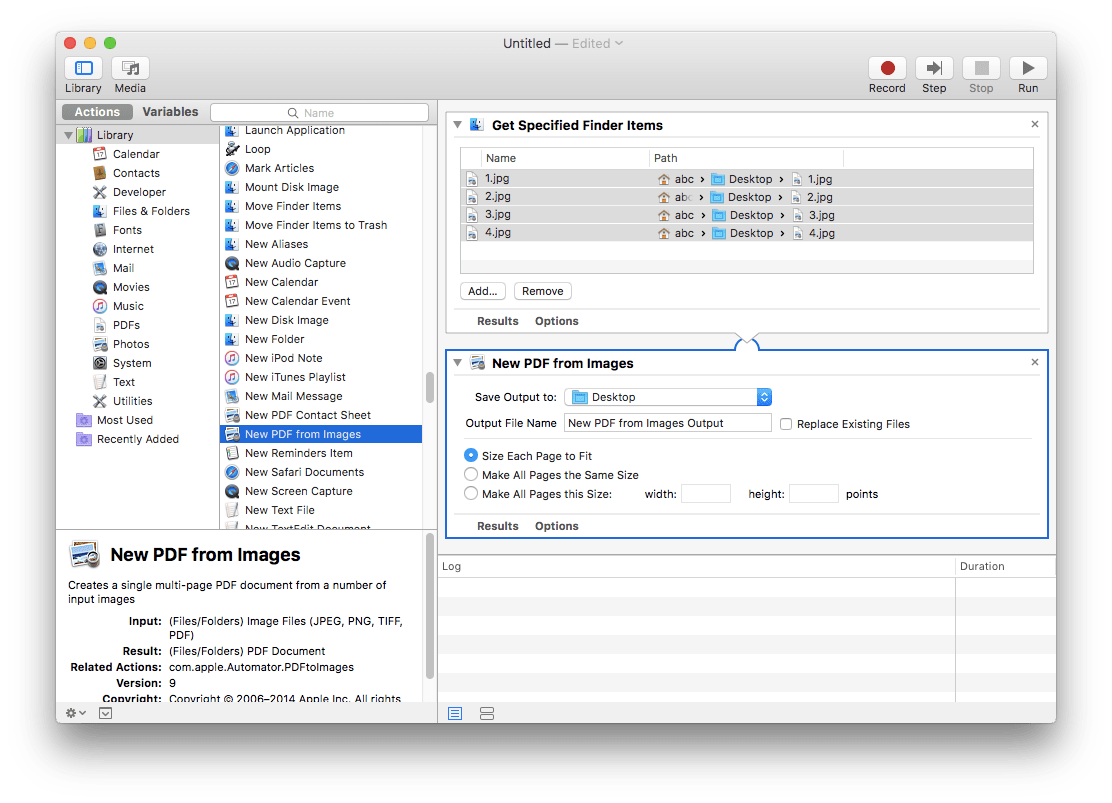
- #MAC CONVERT JPG TO PDF HIGH RESOLUTION PDF#
- #MAC CONVERT JPG TO PDF HIGH RESOLUTION DRIVERS#
- #MAC CONVERT JPG TO PDF HIGH RESOLUTION DRIVER#
- #MAC CONVERT JPG TO PDF HIGH RESOLUTION PRO#
In addition to file conversion, with these toolkits, similar to Acrobat Pro, you also get features for editing PDFs.
#MAC CONVERT JPG TO PDF HIGH RESOLUTION PDF#
Of course, many non-Adobe PDF toolkits such as PDFelement have powerful document conversion features that seem to work quite well. While this seems to have been resolved, be careful! However, the software has received some criticism for including unwanted software (and even malware) in their installer. It’s free and also (for the most part) open source. The most prominent one probably is pdfforge’s PDFCreator. They often support more features than the standard Microsoft Office export module.
#MAC CONVERT JPG TO PDF HIGH RESOLUTION DRIVERS#
If you cannot (or don’t want to) afford Adobe Acrobat, there are various PDF printer drivers that can be used to create PDFs from anything that can be printed.
#MAC CONVERT JPG TO PDF HIGH RESOLUTION DRIVER#
Using a PDF Printer Driver or an Alternative PDF Toolkit If you export those using PDF/A settings, they will just appear slightly darker than the original transparent one. The last important thing to remember is that the PDF/A format (designed for long-term archival) is not compatible with transparent images. Go to Preferences and then change the Conversion Settings:
#MAC CONVERT JPG TO PDF HIGH RESOLUTION PRO#
If you are using Acrobat Pro (or rather Adobe PDFMaker), make sure to also change its default setting to a higher resolution (in this case ‘High Quality Print’). In this regard it is important to note that the newer versions of Microsoft Office, such as 2016, are only really compatible with the recent DC versions of Acrobat, not X or XI. If you are working with complex images, transparent images, or extremely large files, Adobe Acrobat (DC) is generally advisable - despite its high cost. However, while both the print version and the Adobe version look fine, Adobe Acrobat handles such things as transparency much better 1. Also, in the additional Options menu, you will find the Optimize for image quality setting which should be turned on. If you use the Save As option and select PDF as the filetype, you will see an additional Optimize for option allowing you to optimize for online and print publication.

In recent versions of Office (e.g., Office 2019) there are also import options in the PDF save dialogue. If you choose to select ‘Do not compress image files,’ Office will ignore the ‘default resolution’ and just use the original image file’s resolution.

This alone will drastically improve the quality of your PDF files. In the following example, I have changed the default resolution to ‘High fidelity’ - the highest setting available. Unfortunately, you have to do this for all Office products individually. This can be done in the Office options menu. If file size (high fidelity PDFs are much larger) is not really an issue for you, it seems reasonable to just change the defaults setting in PowerPoint and Word. The bottom left and right examples are exports from PowerPoint 2016 (print settings) and Adobe Acrobat DC respectively.

However, once you’ve spotted them, they really spoil an otherwise beautiful PDF export. Often, especially with smaller logos or background images, the compression artifacts are hard to spot on first glance. On the top right, we can see a PDF export from PowerPoint with default settings. The top left image is a screenshot directly from PowerPoint 2016. The following example shows exported PDF versions of a cat photograph with various settings. Unfortunately, the default settings of Microsoft Office (as far as I know in all versions) produce rather unimpressive results when it comes to images. Just think of presentation slides or handouts that you want to put online. Hence, often it makes sense to export PDF files from Microsoft Office (e.g., Word or PowerPoint) in order to make them available for others. PDF (Portable Document Format) files are, in many ways, perfect for exchanging documents that don’t need to be changed after the fact.


 0 kommentar(er)
0 kommentar(er)
